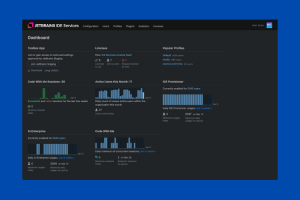The pace of software releases has only accelerated, and DevOps is the reason things have sped up. Now, artificial intelligence and machine learning are starting to play a role in this acceleration of code releases.
GitLab’s latest survey of 4,300 developers and managers finds some enterprises are releasing code ten times faster than in previous surveys. Almost all respondents, 84%, say they’re releasing code faster than before, and 57% said code is being released twice as fast, from 35% a year ago. Close to one in five, 19%, say their code goes out the door ten times faster.
Developers’ roles are shifting toward the operations side as well, the survey shows. Developers are taking on test and ops tasks, especially around cloud, infrastructure and security.
Fully 43% of our survey respondents have been doing DevOps for between three and five years — “that’s the sweet spot where 
“Just like any agile framework, DevOps requires buy-in. If the development and operational teams are getting along working in harmony that is terrific, but it cannot amount to much if the culture stops at the metaphorical IT basement door. Without the backing of the whole of the business, continuous improvement will be confined to the internal workings of a single group.”
Matthew Tiani, executive vice president at iTech AG added
“DevOps is a commitment to quick development/deployment cycles, enhanced by, among other things, an enhanced technical toolset — source code management, CI/CD, orchestration. But it takes more than toolsets, he adds. Successful DevOps also incorporates “a compatible development methodology such as agile and scrum, and an organizational commitment to foster and encourage collaboration between development and operational staff. Wider adoption of DevOps within the IT services space is common because the IT process improvement goal is more intimately tied to the overall organizational goals. Larger, more established companies may find it hard to implement policies and procedures where a complex organizational structure impedes or even discourages collaboration. In order to effectively implement a DevOps program, an organization must be willing to make the financial and human investments necessary for maintaining a quick-release schedule.”
According to Emma Gautrey, what’s missing from many current DevOps efforts is:
“the understanding and shared ownership of committing to DevOps. Speaking to the wider community, there is often a sense that the tools are the key, and that once in place a state of enlightenment is achieved. That sentiment is a little different from the early days of the internet, where people would create their website once and think ‘that’s it, I have a web presence.'”
With DevOps, there is a danger in losing interaction with individuals over the pursuit of tools and processes. Gautrey stated that nothing is more tempting than to apply a blanket ruling over situations because it makes the automation processes consistent and therefore easier to manage. Responding to change means more than how quickly you can change 10 servers at once because customer collaboration is key.








